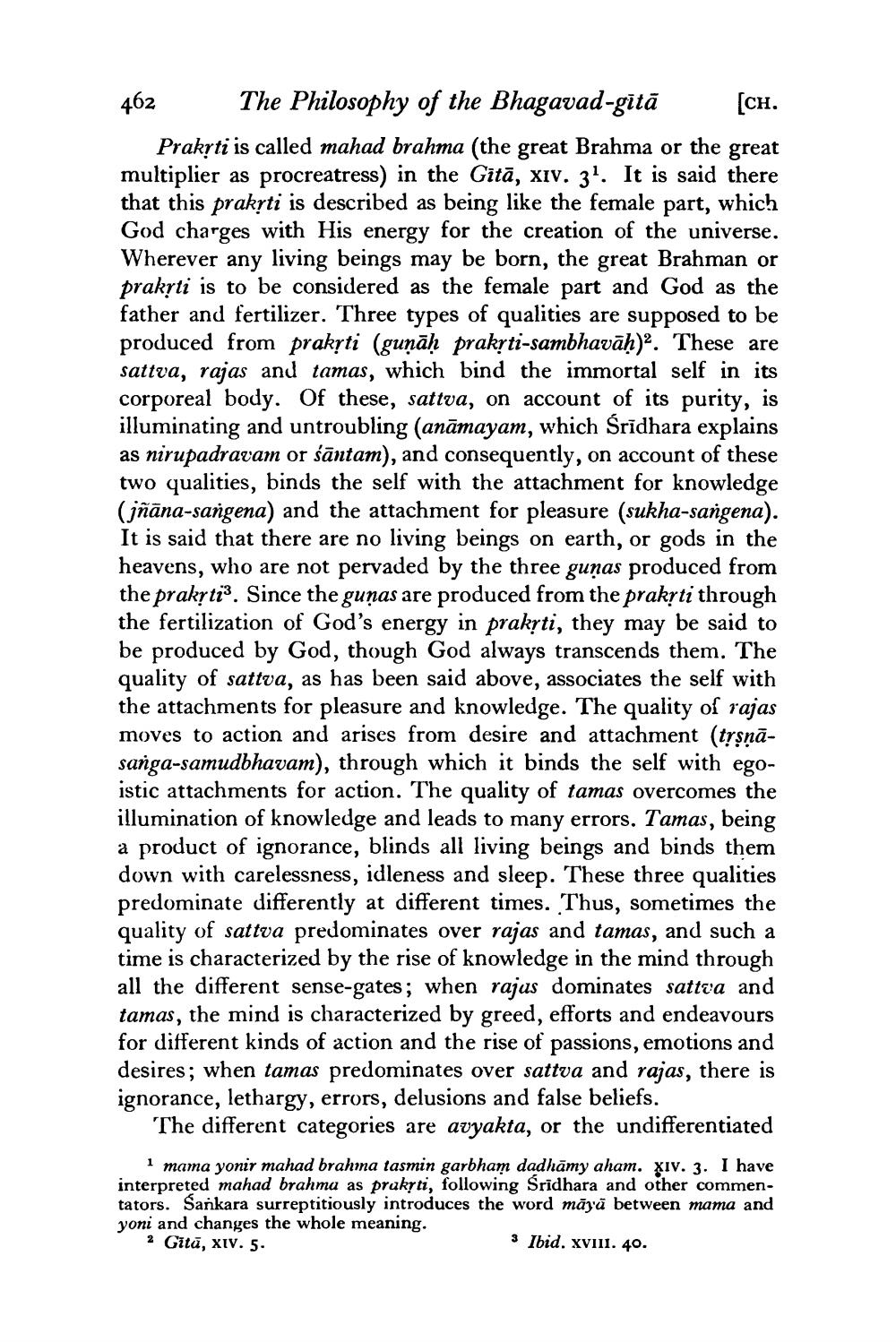________________
The Philosophy of the Bhagavad-gitā
[CH.
Prakyti is called mahad brahma (the great Brahma or the great multiplier as procreatress) in the Gita, XIV. 3'. It is said there that this prakṛti is described as being like the female part, which God charges with His energy for the creation of the universe. Wherever any living beings may be born, the great Brahman or prakrti is to be considered as the female part and God as the father and fertilizer. Three types of qualities are supposed to be produced from prakṛti (gunāḥ prakṛti-sambhavāḥ)2. These are sattva, rajas and tamas, which bind the immortal self in its corporeal body. Of these, sattva, on account of its purity, is illuminating and untroubling (anamayam, which Śrīdhara explains as nirupadravam or sāntam), and consequently, on account of these two qualities, binds the self with the attachment for knowledge (jñāna-sangena) and the attachment for pleasure (sukha-sangena). It is said that there are no living beings on earth, or gods in the heavens, who are not pervaded by the three gunas produced from the prakṛti3. Since the gunas are produced from the prakṛti through the fertilization of God's energy in prakṛti, they may be said to be produced by God, though God always transcends them. The quality of sattva, as has been said above, associates the self with the attachments for pleasure and knowledge. The quality of rajas moves to action and arises from desire and attachment (tṛṣṇāsanga-samudbhavam), through which it binds the self with egoistic attachments for action. The quality of tamas overcomes the illumination of knowledge and leads to many errors. Tamas, being a product of ignorance, blinds all living beings and binds them down with carelessness, idleness and sleep. These three qualities predominate differently at different times. Thus, sometimes the quality of sattva predominates over rajas and tamas, and such a time is characterized by the rise of knowledge in the mind through all the different sense-gates; when rajas dominates sattva and tamas, the mind is characterized by greed, efforts and endeavours for different kinds of action and the rise of passions, emotions and desires; when tamas predominates over sattva and rajas, there is ignorance, lethargy, errors, delusions and false beliefs.
The different categories are avyakta, or the undifferentiated
462
1
mama yonir mahad brahma tasmin garbham dadhamy aham. XIV. 3. I have interpreted mahad brahma as prakyti, following Sridhara and other commentators. Sankara surreptitiously introduces the word māyā between mama and yoni and changes the whole meaning. 3 Ibid. XVIII. 40.
2 Gitā, XIV. 5.




